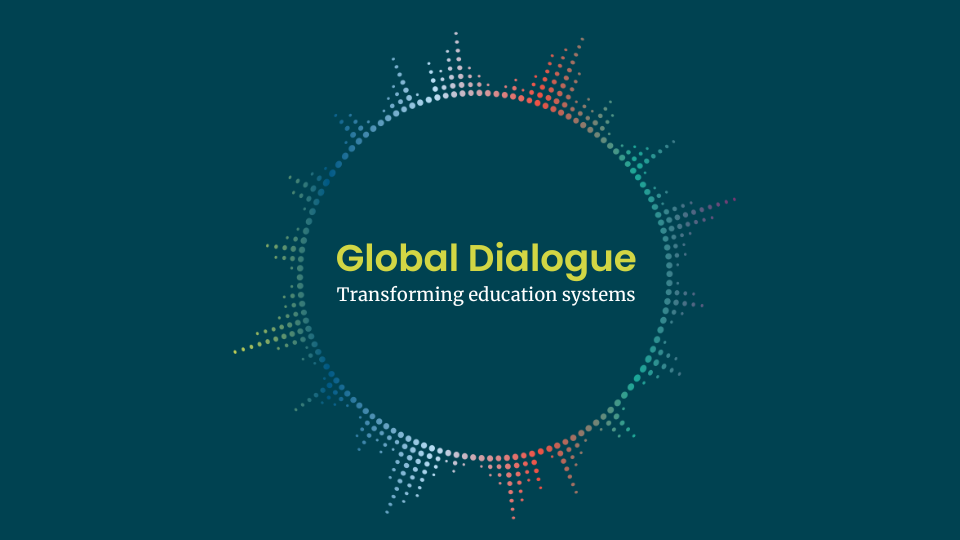Foreword by Tony McAleavy
In this report, Dr Richard Churches proposes an approach that is characterised by coherence, policy alignment, and the avoidance of simplistic ‘silver bullet’ solutions. This diagnosis is based on a review of the best of the global literature relating to school improvement at scale. The critical reflections and recommendations are also aligned with our organisational learning over the last four decades of work in the sphere of education reform.
Education Development Trust (EDT), previously known as CfBT and still known as such in Brunei Darussalam, has worked since the late 1990s on school reform in many countries. These contexts have been diverse, and have included places with significantly different economic, political and cultural backgrounds, such as Brunei, England, Kenya, Rwanda, and the United Arab Emirates (UAE). While the world is littered with examples of school reform failure, each of these countries provide, by contrast, stories of measurable improvement and optimism. These real-world exemplars have many things in common, and together they confirm the urgent relevance of this analysis.
Fragmented approaches that focus on individual policy levers for change rarely work, whereas joined-up policy, which recognises the need to win the hearts and minds of key stakeholders, can lead to significant improvements in learning outcomes and life chances.
Tony McAleavy, Chief Education and Skills Officer
Introduction
Improving schools at scale remains one of the most complex challenges facing governments globally. For reforms to succeed, they must be integrated into the wider fabric of education systems and respond to real-world contexts, not just theoretical models. In recent years, the concept of system strengthening has gained prominence, recognising that sustainable improvement depends on building institutional capacity, coherence, and resilience across all levels of an education system (World Bank, 2018).
System strengthening and sustainable reform
System strengthening involves more than scaling up pilot projects or delivering professional development. It is about embedding the capacity for improvement within the structures, people, and cultures of the system itself. It means ensuring that institutions (not just individuals) are capable of learning, adapting, and delivering consistent quality over time (Pritchett, 2015). The education systems that have shown sustained improvement tend to combine professional trust with accountability, capacity-building with clear expectations, and long-term vision with evidence-informed practice (Mourshed, Chijioke, and Barber, 2010). These are systems where policy levers are used not to control, but to enable. Through a systems-oriented lens, the idea of policy levers becomes central.
What are policy levers?
Policy levers are the mechanisms through which governments can influence education systems in structured and potentially predictable ways. They include instruments such as funding formulas, standards and accountability frameworks, curriculum mandates, leadership development strategies, and workforce regulations (OECD, 2015). While these tools may seem technical, the selection and usage of them reflects deeper political and philosophical choices about what matters in education and how improvement is understood.
Levers do not work well in isolation. A funding formula, for example, may fail to improve education equity unless paired with effective school leadership and data systems that allow for monitoring of outcomes. This interdependence points to the need for coherence across levers and alignment with long-term system strengthening goals (Reimers and Chung, 2016). Thus, alongside levers, good outcomes data at the national level is essential as, arguably, is the ability to compare a country’s performance internationally on the global stage. Tests like the Programme for International Student Assessment (PISA) (OECD, 2023), Progress in International Reading Literacy Study (PIRLS) (Mullis et al., 2023), and Trends in International Science and Mathematics Study (TIMMS) (Mullis, 2020) can help in this respect, and act as a focus – helping policymakers to look at the practices of the best performing countries and learn from them.
While levers can be powerful, their impact depends not just on which ones are used, but how, when, and in what combination. In turn, specific levers from one context may not translate effectively into another – so policymakers need to be mindful and reflect on the goals they wish to achieve in their own specific contexts. It is also important to ensure that policy levers are linked to the right measurable changes and improvements, and are chosen for the likelihood that they will do this efficiently.
By extension, as the Research on Improving Systems of Education (RISE) programme has demonstrated (Spivack, Silberstein and Hwa, 2023), it is essential to avoid two forms of misalignment for reforms to be effective. Firstly, misalignment from parts of the system being oriented to a purpose other than learning (for example, focusing on political considerations, bureaucracy or access expansion, rather than classroom learning). Secondly, misalignments between components of the education system (for example, curriculum learning goals not supported by the assessment system or by teacher incentives).
This report provides a practical exploration of the concept of policy levers and discusses those with the strongest evidence base for improving school performance. It makes practical recommendations for policymakers seeking to embed improvement within the broader goal of system transformation.
Approach
Building on our global dialogues (Churches and McAleavy, 2025), this paper adopts a narrative and critical review approach (Grant and Booth, 2009), enabling synthesis across diverse international sources and a reflective critique of both evidence and implementation contexts. Further expanded papers covering wider aspects of the literature in each of the areas covered are being explored for future publication.
Key policy levers for school improvement
1. Developing the education workforce
No system can outperform the quality of its teachers. A well-trained, professionally supported teaching workforce remains the most reliable predictor of improved outcomes (Darling-Hammond, 2000). Countries that take teaching seriously – as a skilled, knowledge-rich profession – tend to invest in pre-service teacher preparation, mentoring, career progression, and ongoing professional development. Such approaches are essential because of the complexity of teaching and the need for continuous improvement (OECD, 2025).
Policy levers: National teacher standards, funded professional learning pathways, structured induction for early career teachers, teacher licensing, and leadership development programmes.
2. Strengthening instructional leadership
Leadership is the second most important in-school factor affecting student learning. Effective school leaders do more than manage operations; they shape culture, develop people, and focus relentlessly on learning (Leithwood et al., 2008). Systems need to identify, develop, and retain leaders who can lead instructional improvement.
Policy levers: Principal licensure, distributed leadership models, and system-wide leadership training aligned with improvement goals and the need to build succession.
3. Using data to drive improvement, not just accountability
While performance data and assessments are essential, how they are used makes all the difference. Systems that improve tend to build intelligent accountability mechanisms that encourage reflection, support, and adaptation, rather than fear and compliance (Schildkamp et al., 2012).
Policy levers: School review frameworks with feedback loops, including school inspection (although many models of external and internal review can be effective depending on the context), national assessment systems for formative use, capacity-building in data literacy, and robust national assessments of learning progress.
4. Aligning curriculum, pedagogy and assessment
Improvement cannot occur if what teachers are asked to teach is incoherent or misaligned with how learning is assessed. Countries that invest in clear, well-sequenced curricula linked to assessments and teacher training provide a coherent framework within which improvement can occur (Fullan and Quinn, 2016). It is also increasingly clear that having a knowledge-rich curriculum and the structural implications that flow from this is an essential aspect of curriculum design (Surma, 2023).
Policy levers: National curriculum frameworks, curriculum review cycles, and competency-based assessments that reflect real learning.
5. Addressing equity through targeted investment
Without deliberate action, disadvantaged students tend to benefit least from generic improvement strategies. System strengthening therefore requires attention to equity – redistributing resources, adapting policies, and ensuring all learners have access to quality education (UNESCO, 2020).
Policy levers: Weighted funding formulas, early intervention programmes, universal early childhood provision, and inclusive education strategies.
6. The rest learning from the best
In recent years it has become increasingly clear that there is much to be gained by identifying and cultivating best practice and providing opportunities for teachers and school leaders to learn from each other. This can yield powerful results in terms of teacher buy-in during reform. Indeed, the highest performers can also learn and grow in response to such targeted engagement (Churches, Warenisca, Bunn and Bennett, 2025).
Policy levers: Joint practice development between both teachers (as in research lesson study) and school leaders, structured peer review, teachers engaging in research, ‘Teaching Schools’ and model schools (drawing on the teaching hospital model in the healthcare sector).
7. Making decisions based on the best available evidence
Using the best available evidence to guide decision-making is a key lever for improving educational outcomes at scale. Evidence-informed policymaking ensures that reforms are guided not by ideology or tradition, but by research and evaluations that demonstrate measurable impact (OECD, 2015; WWC, 2023, EEF, 2021; AERO, 2023). However, embedding the use of evidence in policymaking processes requires more than just access to research; it depends on building the capacity of educators and system leaders to understand and apply evidence, as well as institutionalising mechanisms for feedback and continuous improvement (Davies, Nutley, and Smith, 2000).
Policy levers: use of research clearinghouses and toolkits that synthesise findings from high-quality studies, including randomised controlled trials and meta-analyses.
Examples of evidence-based policymaking in practice
- The What Works Clearinghouse (WWC), established by the U.S. Department of Education, reviews and rates educational research, providing systematic summaries of what is known about the effectiveness of interventions (WWC, 2023).
- The Education Endowment Foundation (EEF) in England evaluates educational interventions and communicates findings through its Teaching and Learning Toolkit, which has become a widely used decision-making tool for school leaders, particularly regarding how to support disadvantaged pupils (EEF, 2021).
- The Australian Education Research Organisation (AERO) supports schools and systems by making high-quality research evidence accessible and practical, including guidance on implementation and fidelity (AERO, 2023).
Recommendations for policymakers
1. See schools within systems: Avoid ‘silver bullet’ solutions. Instead, focus on how levers work together to build institutional capacity, professional trust, and system coherence.
2. Invest in people, not just structures: Improvement is driven by people: teachers, leaders and support staff. Long-term investment in workforce development should be a priority.
3. Balance autonomy with accountability: Provide schools with the flexibility to innovate, within frameworks that ensure quality, equity, and alignment with system goals.
4. Build for the long term: Sustainable reform is iterative. Avoid policy churn (frequent and repeated changes in policy direction without time for proper implementation or learning). Use pilot programmes to learn, not to defer action.
5. Make equity non-negotiable: Use policy levers to direct resources and attention to those who need it most. Improvement without equity is not true progress.









